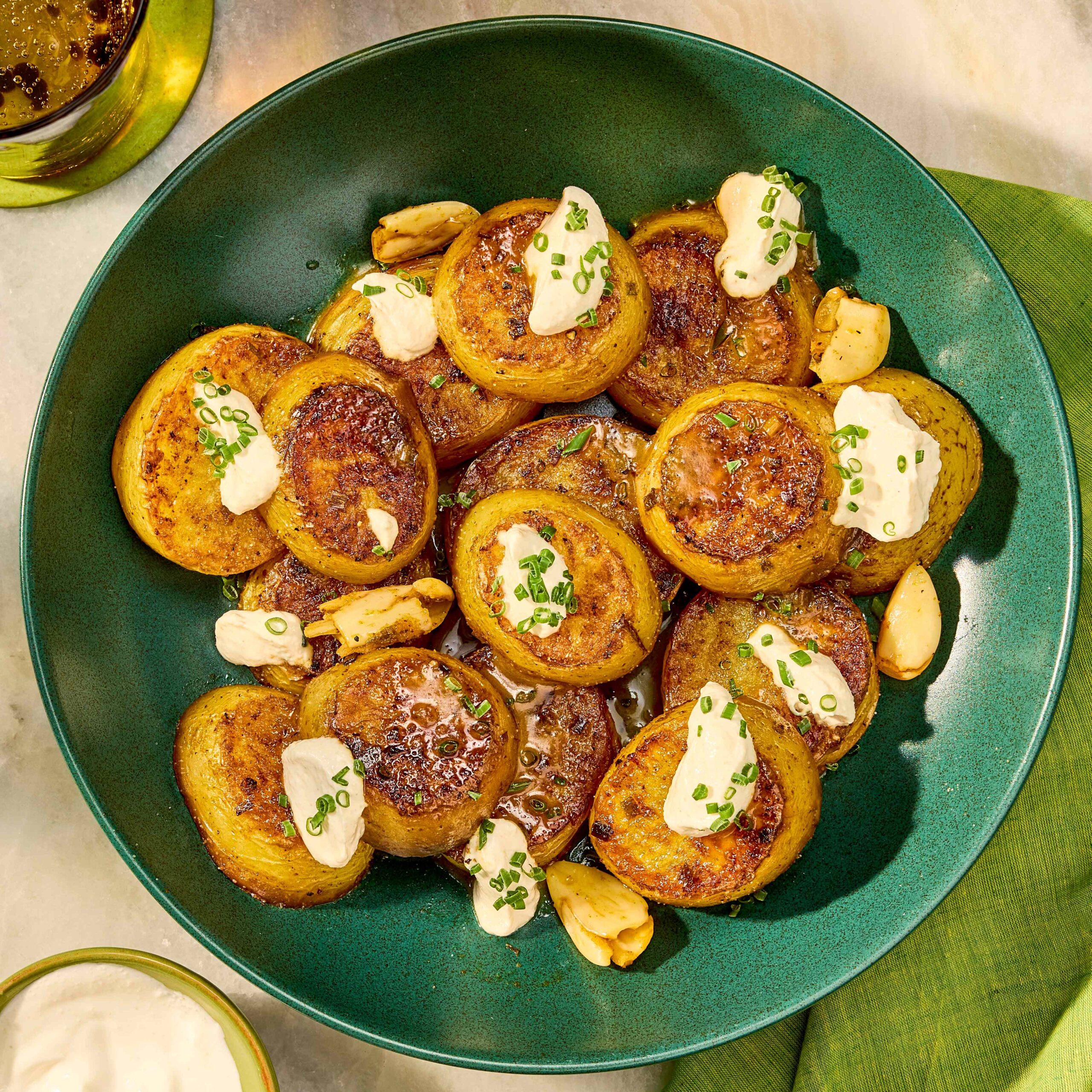- Roasting a chicken offers a variety of satisfying meal options throughout the week.
- Leftover roasted chicken can be used in delicious pilafs, sandwiches, salads or tacos.
- You can incorporate favorite seasonings to boost flavor and use the carcass to make stock.
Fall has always been my favorite season. I love the typically not-too-hot, not-too-cold days and lower humidity here in New England. I love seeing the leaves change colors. And I love all the flavors and smells that come with fall. It’s a season that inspires me to spend more time in the kitchen, baking breads and simmering soups on weekends. I become more thoughtful about what meals I can make and stretch throughout the week, as we’re less likely to just quickly grill something each night and add a salad or some summer vegetables on the side. So, thinking about how to turn one meal into many, I started thinking about all the meals I could get from roasting one chicken.
With the summer heat fading away, I don’t mind having my oven on for an extended period of time, and a chicken is one of those things you can just put in the oven to roast while you concentrate on other components of the meal or even sit outside with a book for a little while.
Choose a Favorite Way to Roast
There are many ways to roast a chicken, and everyone you ask probably has a different favorite method. I have followed recipes where you salt the chicken a few days in advance and others where you salt it just an hour or so before cooking. I’ve tried high-heat methods and methods where you start the chicken upside down and then flip it over later to keep the breast meat moister. I have seen steps that call for trussing (or tying together) the chicken legs, and others that call for splaying them (cutting through the skin between the leg and thigh and then flattening the legs). And even others that call for spatchcocking the chicken—this is when you remove the backbone and press the chicken flat to help it cook faster and more evenly. Some recipes call for simply seasoning the chicken with salt and pepper, while others call for spices ranging from chili powder to za’atar. They all work. It’s really hard to go wrong when it comes to roasting a chicken—as long as you don’t overcook it (that’s where a meat thermometer can come in handy!).
Try a Basic or Brining Recipe
For my weekly roast chicken, I tend to make one that is seasoned with just the basics, so it doesn’t have a flavor profile I need to worry about when I go on to use the leftovers or to turn the carcass into stock. (Though every now and then I might make a spiced version for a little variety and forgo making stock.) If you’re new to roasting chicken, a good recipe to start with is our Basic Whole Roast Chicken.
For this recipe, you’ll combine softened butter, fresh herbs, salt and pepper and spread the mixture underneath the chicken skin. Then you’ll place a halved lemon and a halved head of garlic in the cavity of the chicken and tie the legs together. Next, you’ll transfer the chicken to an oven-safe pot with some chopped carrots and celery and sliced onion and then roast it covered for an hour. Roasting the chicken in a covered pot helps keep the meat moist. Once it’s almost done, you’ll uncover it and pop it under the broiler to crisp the skin and finish cooking it. The bonus to this recipe is that you can eat the vegetables you roasted with the chicken.
When you’re ready to take your chicken-roasting game to the next level, you can try our Oven-Roasted Whole Chicken, which is brined overnight before roasting. Try our Crispy Roast Chicken and Simple Roast Chicken recipes, which get rave reviews. Alternatively, Roast Chicken with Cider Gravy and Roast Chicken with Pomegranate Glaze are nice options, especially during the fall and winter months.
Turn Leftovers Into Many Meals
Since chicken is a bit of a blank canvas, once you’ve roasted it, you can use it in any number of ways. My husband prefers the white meat, and I prefer the dark meat, so on night one, he usually eats a chicken breast and I eat a thigh, along with whatever vegetables I’ve decided to cook and some rice, whole grains or potatoes. After dinner, I’ll remove the rest of the chicken meat from the bones, shred it and pack it into a storage container for the next day.
My favorite way to use the leftovers is when I’ve made some grain pilaf and roasted Brussels sprouts for dinner, and I have leftovers of everything. I’ll just throw it all in a skillet the next day with some of the leftover chicken and make a quick lunch. If I don’t have that combination of leftovers, some other things I’ll do with the leftover chicken are make sandwiches or wraps, add it to a salad, put it in tacos or piece together some kind of bowl with any other odds and ends in the fridge. This can work for lunch or dinner, depending on when I need a quick meal that week.
Save the Carcass for Stock
As for the chicken carcass, depending on my timing and next-day plans, I’ll either put it right into the slow cooker with some carrots, onions, celery and thyme; add water; and slow-cook it overnight to wake up to the whole house smelling like chicken soup, or I’ll refrigerate the carcass overnight and make stock on the stove the next day. Once the stock cools slightly, I portion it into pint or quart containers and refrigerate them until cold. At this point, I can save the stock to use in other dishes throughout the week, or I can freeze the containers until I need them.
I’ll usually plan to use some of my first batches of stock to make soup. This gives us soup to eat for lunches later in the week and often enough to freeze for future meals. (I tend to freeze soup in pint containers, so I have single servings at the ready throughout the fall and winter months.)
Our Expert Take
The benefits of roasting a chicken every week sell themselves. You get more than one high-protein meal out of the bird (unless you’re feeding a crowd; but in that case roast two chickens!), and you can make a flavorful stock to use in other meals down the road. Plus, the way your house smells when you roast a chicken is so warm and comforting.





